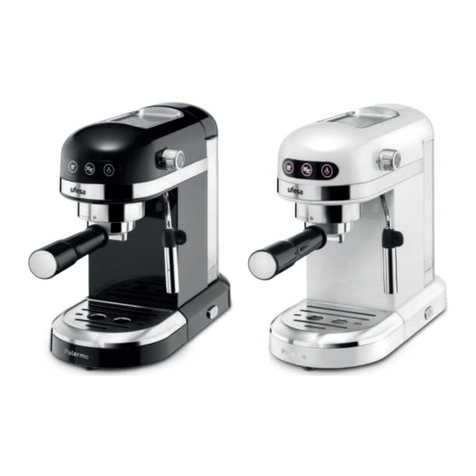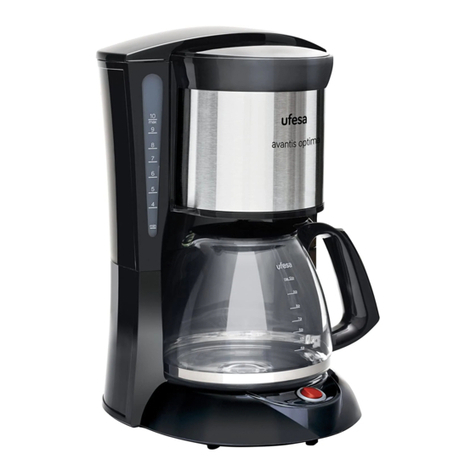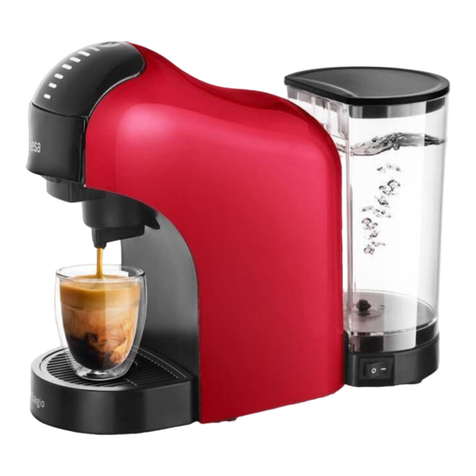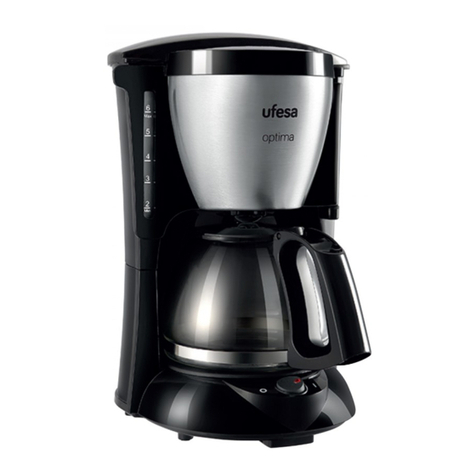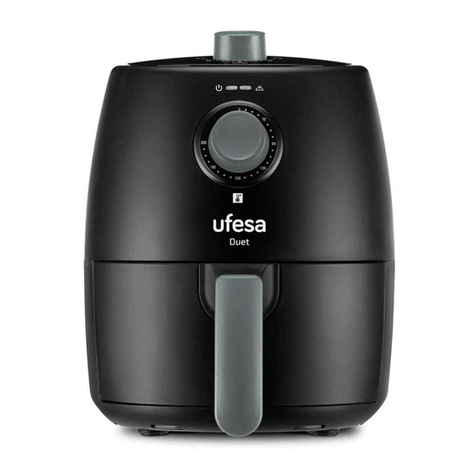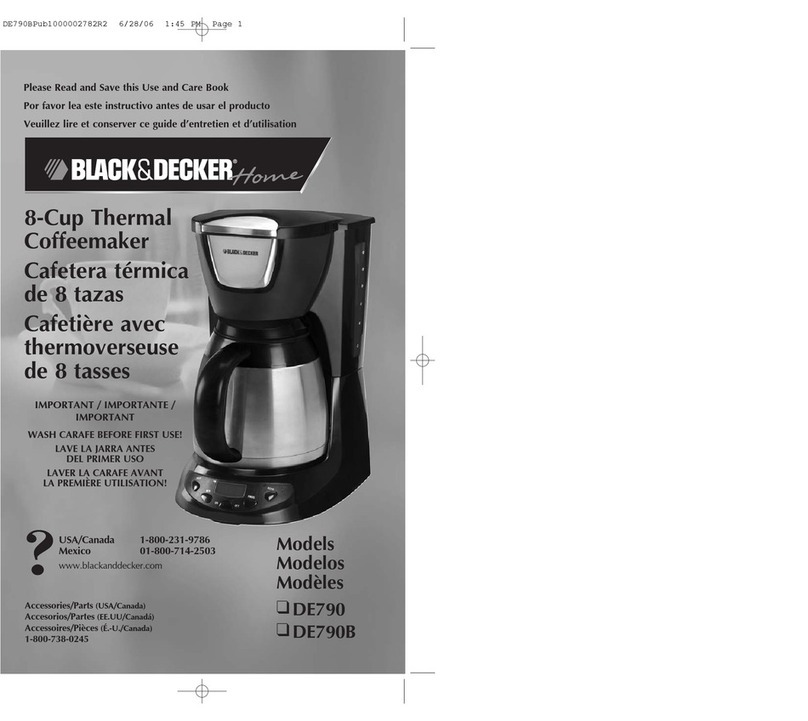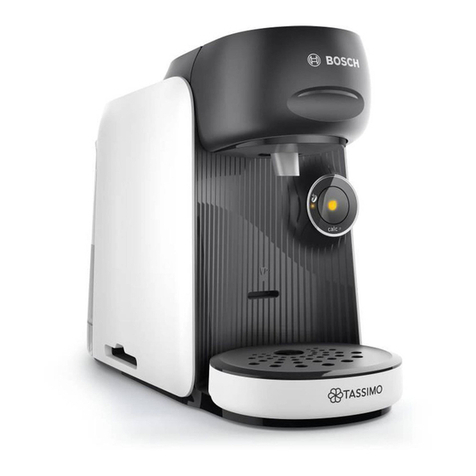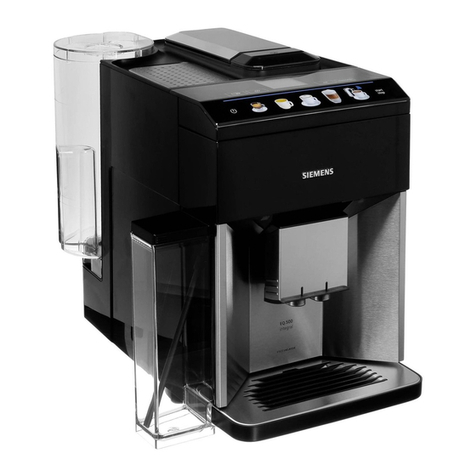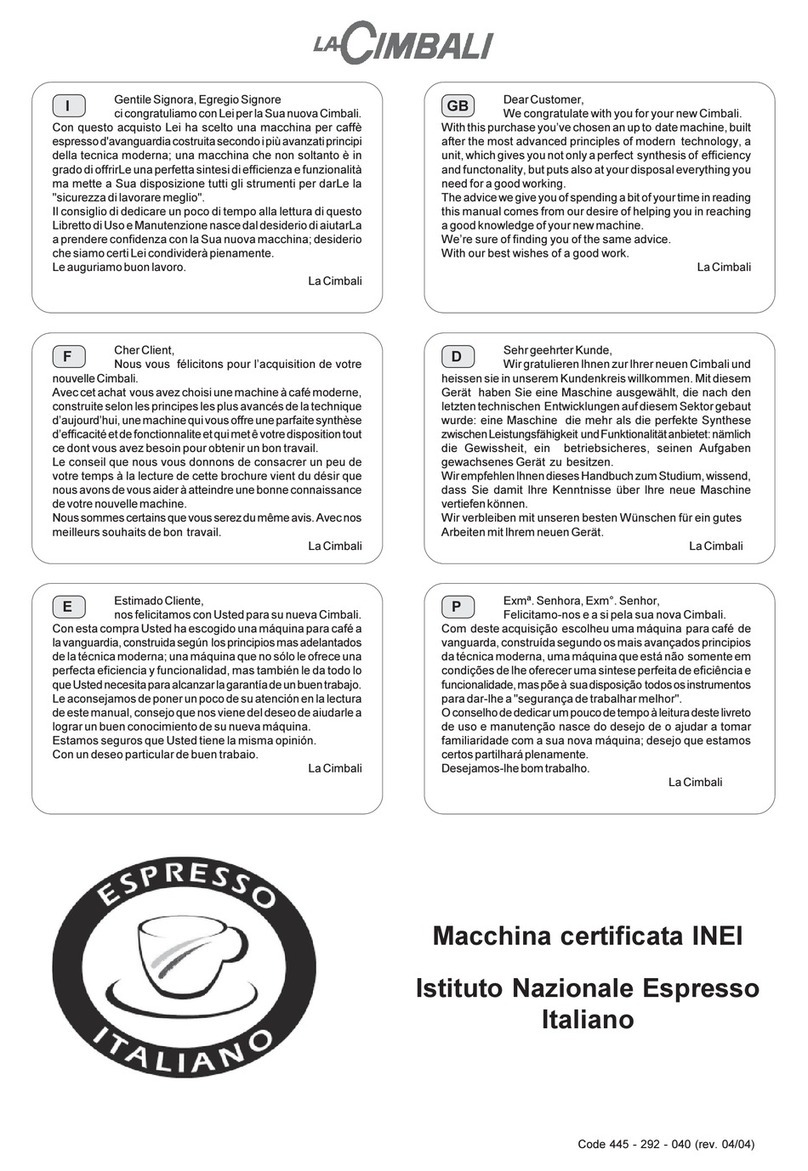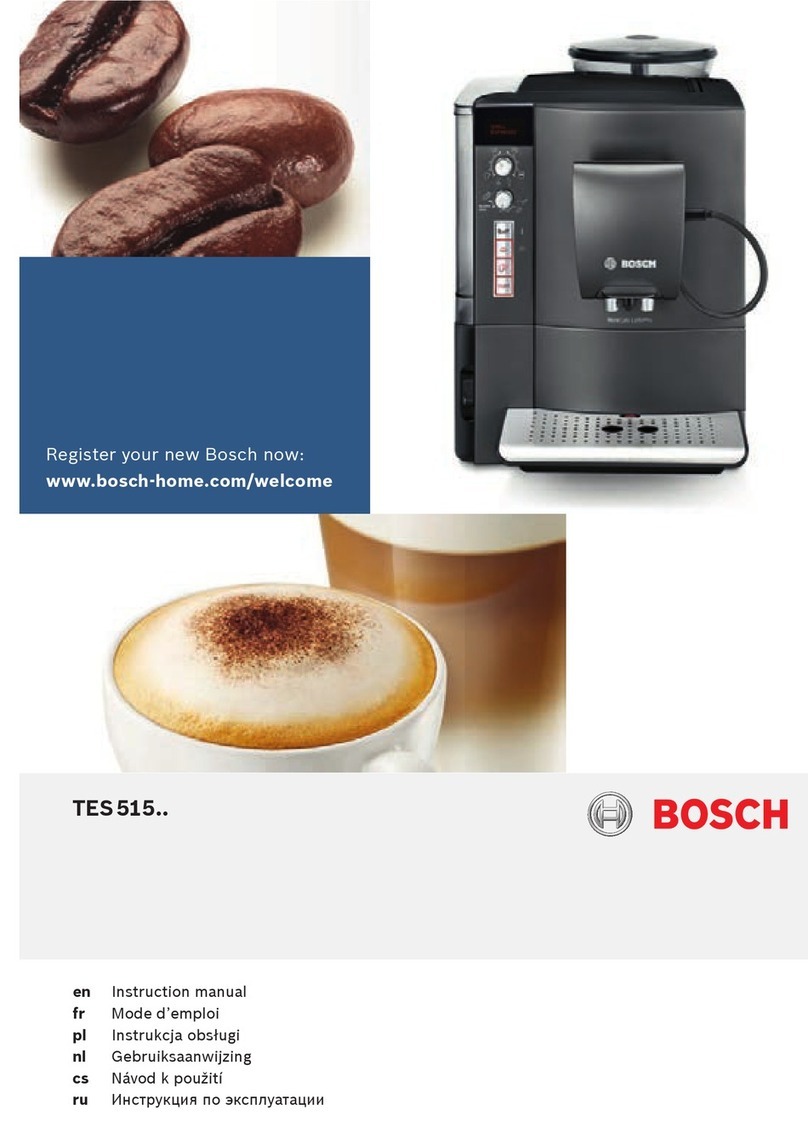whereas the “intenso” position produces stronger
coffee.
Fig. 9 Press the Espresso ON/OFF switch (8). The
pilot lamp will light up and after a short heat-up time the
espresso will begin to flow out. When the flow stops,
turn the switch back to the OFF position.
Important:
• The tank can only be opened safely when all the
water has been used up and there is no pressure
inside it. To be certain that there is no pressure inside
the tank:
- Switch the ON/OFF switch (8) to OFF and unplug the
appliance.
- Place a jug full of water below the steam nozzle (11).
- Choose the “steam” position on the aroma/steam
selector (9) and turn the steam regulator (10)
anti-clockwise.
- When no more steam comes out, close the steam
regulator by turning it clockwise.
• After usage the filter holder should be left to cool
down for a few minutes before taking it out.
PREPARING CAPPUCCINO (Fig. 10 - 15)
Fig. 10 - 11 Follow the instructions for making
espresso. Use the lever mark on the espresso jug to
measure the right amount of water. As soon as the first
few drops of coffee are forced through the filter holder
you can start frothing the milk.
Fig. 12 Place the tip of the steam nozzle half way into
the jug of cold milk.
Fig. 13 Set the Aroma/steam selector (9) to the
“steam” position.
Fig. 14 Open the steam regulator (10) by turning it
anticlockwise. The excess water will flow out through
the espresso outlet. Once the froth is ready, move the
jug up and down slightly to heat up the milk.
Fig. 15 To stop the steam coming out, close the steam
regulator (10) by turning it clockwise.
Pour the frothed-up milk onto the coffee.
Important: Do not attempt to open the lid on the tank while
there is still pressure inside. When you have finished
remember to bring the pressure down by following the
instructions stated in the previous point.
CLEANING & MAINTENANCE
(Fig. 16 - 18)
Unplug the appliance from the mains supply before
proceeding to clean it.
Fig. 16 Wash the moving parts with soapy water. The
drip tray (15) and the nozzle cover can be removed
for easy cleaning. Wipe down the body of the coffee
maker with a damp cloth.
Fig. 17 It is necessary to clean the steam pipe regularly
to ensure that it does not get clogged. To clean the
inside of the steam pipe, fill the water tank (7) with
enough water for one cup of espresso coffee and
operate the steam nozzle without milk until it stops
steaming. Switch off the steam and rub the nozzle
down with a damp cloth immediately afterwards.Take
care when doing this as it may still be very hot.
Fig. 18 After use, check if both water tanks (4 and 7)
are completely empty. Do not store the appliance with
the espresso filter holder (12) still fitted.
DESCALING
The coffee maker should be descaled regularly,
depending on the water hardness and frequency of
use.
A) Descaling the filter coffee maker
1. Place the empty coffee jug (3) on the heating plate
(2).
2. Dilute three cups of vinegar in nine cups of water
and fill the tank (4) with the mixture.
3. Switch the coffee maker on for one minute. Switch
it off and let it stand for half an hour.
4. Switch the coffee maker back on so that all the
water/vinegar solution flows out. Pour this away and
clean out the jug.
5. To flush out any traces of vinegar, run the filter
coffee maker through two more cycles using clear tap
water.
B) Descaling the espresso maker
1. Before beginning the descaling operation, remove
the filter holder (12) and the filter (13).
2. Remove the remains of any coffee that might be
around the coffee outlet with a damp cloth.
3. With the help of the marks on the espresso jug
(14) dissolve one part vinegar with three parts water
and pour the mixture into the water tank (7). Place one
container below the coffee outlet and another one
below the steam nozzle. Switch the ON/OFF switch
on.
4. Set the aroma/steam selector (9) on steam. Turn
the steam regulator (10) on and let steam come out for
about thirty seconds.
5. Close the steam regulator (10) and allow the rest of
the mixture to flow out through the coffee outlet head.
6. Switch the espresso maker OFF and leave it to cool
down.
7. To flush out any remaining vinegar, run the espresso
maker through two more cycles using clear tap water.
Let the appliance cool down between each cycle.
ADVICE ON DISPOSAL:
Our goods come in optimized packaging. This
basically consists in using non-contaminating
materials which should be handed over to the local
waste disposal service as secondary raw materials.
Before throwing a used appliance away, you should
first make it noticeably inoperable and be certain to
dispose of it in accordance with current national laws.
Your Retailer, Town Hall or Local Council can give you
detailed information about this.
This appliance is labelled in accordance
with the European Directive 2002/96/EC
– concerning used electrical and electronic
appliances (waste electrical and electronic
equipment – WEEE). This product must not be disposed
together with the domestic waste. This product has
to be disposed at an authorized place for recycling
of electrical and electronic appliances. The guideline
determines the framework for the return and recycling
of used appliances as applicable throughout the EU.
Please ask your dealer about current means of disposal.
CK7355 manual.indd 8CK7355 manual.indd 8 2009-04-14 3:55:17.MD2009-04-14 3:55:17.MD

